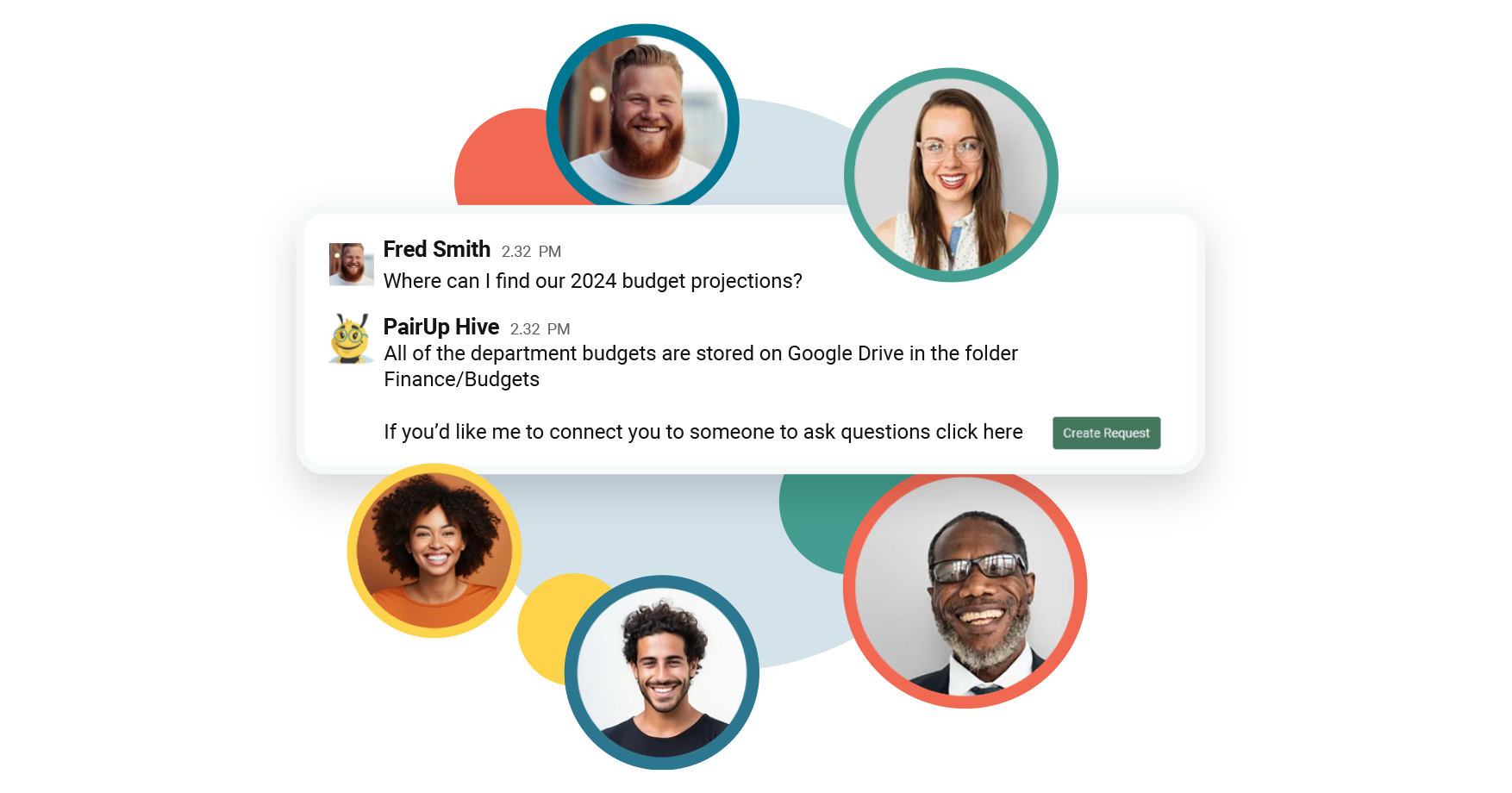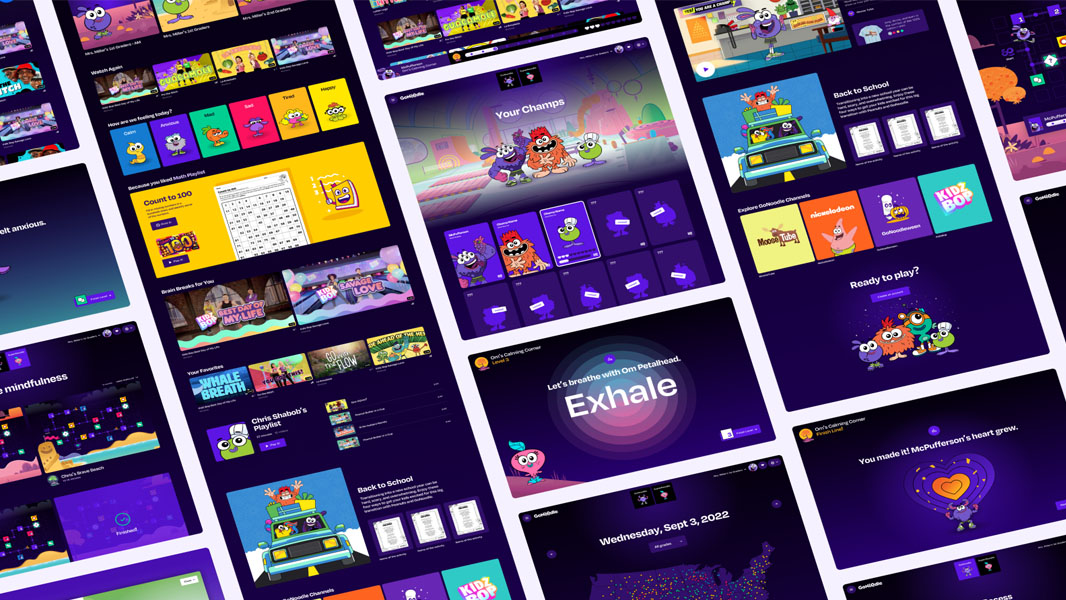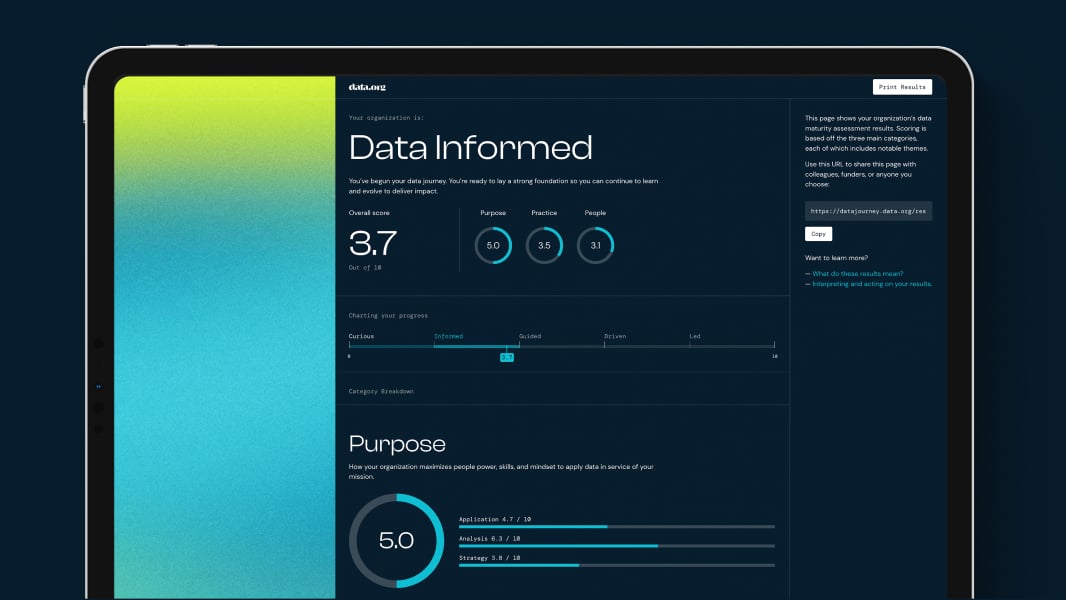Emily Harburg, Ph.D., is an expert at building community. As the co-founder and CEO of PairUp, she’s changing how distributed teams connect. PairUp uses AI to connect staff members to each other, with the goal of getting people support and strengthening company culture. Preparing to run your first performance review? PairUp will introduce you to a seasoned manager who can offer guidance. Need help with a tricky piece of javascript? PairUp can connect you with an engineer with relevant experience. Tapping into their Disney backgrounds, the team at PairUp creates ‘delightful’ connections—and ultimately, community. We spoke to Emily about PairUp’s journey so far.
Small edits made for clarity.
Upstatement: What’s a perfect use case where PairUp is at its best?
Emily Harburg, Ph.D.: One of our core use cases have been around supporting hybrid and remote teams, and so we usually work with medium-sized companies. Our sweet spot has been 1,000 to 10,000 staff, where we work usually with a larger department who is siloed in different areas, different offices, or different geographies, and doesn’t know who’s doing what out there. There’s a lot of duplication of work happening, there are a lot of silos that are forming—so how do we help connect them when they’re working on something or they have a question, especially during fast-paced two-week project cycles?
One of our other core use cases has been around companies going through a merger. So two cultures coming together where people don’t really know each other, we map out knowledge across [those cultures]. We also do a lot with onboarding. So new staff are coming in, how do you help them know who’s out there in the community, who can help them?

Is there one specific story where PairUp showed its greatness?
EH: We work with a company with about 6,000 staff. We started with just one department, engineering, helping to match them and connect them across their teams based on their needs in real time. And then they started to realize there was a lot of similar work happening across multiple departments, but they just didn’t know who was doing it out there. And so we ended up going from just working with engineering to also pulling in marketing, the sales team, and a couple of others where there were some technical issues happening, but also just people wrestling with similar types of leadership questions or wrestling with similar types of onboarding questions. That’s kind of [an ideal] scenario: we’ll start with one community within a company, really get it right with them, and then start to scale out across multiple teams and divisions.
In communities, you’ve got to feel a sense of trust of the system that you’re working in, that it’s going to protect you and that it’s there for you.
Can you talk about how users engage with your products? Because I know that’s also changed over time.
EH: We started more in the mentoring space. Initially we were working with a lot of users looking for mentors, who didn’t know who was out there who could help them. Especially with remote work, actually knowing who you can talk to and finding the right people is quite difficult. But we [expanded beyond] just mentorship, because we found a lot of people had all kinds of questions throughout the day. Employees spend eight hours a week looking for answers to questions that they could find in minutes by just talking to someone. So we ended up opening it up, going from just matching you with a mentor for a few months to actually mapping you in real time to the right people, based on your needs, across these larger communities. The evolution was from long-term pairings with one person to real-time short-term connections across communities. We’re really interested in these large networks of people where silos start to form.
That’s so interesting. How are you using these short-term interactions, as you called them, to build community? What does community actually mean to PairUp?
EH: Often in life, [the formation of] communities is left to chance—if you happen to meet the right person, or if you happen to be extroverted enough to go out and ask for something. So a core PairUp ethos is how can technology do some of those community-building pieces that can be hard? And then how can we let humans be human in the process of that?
Technology can do a lot of things that are helpful, but also can do a lot of things that are pretty unhelpful, or can tap into some of our [worst instincts]… especially in communities. I used to work at Facebook and a big thing that we looked at was: where does it hurt, where does it help, and where does it make us feel lonely, where does it make us feel more connected? Within PairUp our real focus has been, how can you have technology doing some of the mediator things that are hard? ‘You two should talk because you have the same interests,’ or ‘This person just did what you’re doing now.’ Technology can help do some of the mapping and the orienting that is hard. But then [we have to allow for] bridging these connections and letting humans be human.
We’ve been working on adding some features that are really celebrating the community. A lot of the companies we serve have asked for Kudoboards and ways to honor when someone helps and ways to say thank you and ways to continue to build out that sense of community, which people are craving right now. Especially as they work in isolated spaces far from each other.
We also have a number of little features in there that we’ve been also playing with to help bring people in and push them forward, things that could be relevant and help them in ways that they may not know. We are all very busy, inundated people with a lot on our plates. So the more that technology can clear the noise and help you, the better—that’s what we’ve been looking at.
Employees spend eight hours a week looking for answers to questions that they could find in minutes by just talking to someone.
What about the product design? What are some of the features that you’re using to engage folks?
EH: We’ve been looking at elements of reciprocity. How do you help people feel a sense of that if they’re helping someone? We’ve done a lot of elements reworking who’s asked, so that the same people aren’t inundated, so that there’s sharing across and balance across. I also used to work at Disney, and a lot of my background is built on delight: the ways in which you can incorporate delight into an experience.
We initially didn’t have the bee and certain elements that made it a little bit more human. We got some feedback that we needed to be warmer—more delightful. You’re actually interacting with someone, and they’re helping you. So there were little details that we added to help build a trusting relationship. I’m sure you’ve looked so deeply at this as a team [at Upstatement], but in communities, you’ve got to feel a sense of trust of the system that you’re working in, that it’s going to protect you and that it’s there for you.
Especially with our work, there can be a lot of vulnerable questions. We’ve had some very vulnerable questions asked to the system for connections, and so how do you build a space where that’s okay and encouraged and safe?

How did the introduction of the bee in your branding change the way that your community interacted with the product? What was the outcome of the change?
EH: We’ve had some worries about it, if it will look too childish for enterprise SaaS sales. In general, though, people have really taken to the bee. Especially when stuff can feel so corporate and cold at work, having some kind of being is important—we joke that it’s modern day Clippy, but someone or something that you can ask for help is important. We’ve done a lot of research around why people feel comfortable asking ChatGPT all kinds of things that they would never ask anyone. That doesn’t even have a being in there, but there is this fascinating element of trust that people have when it comes to addressing questions to technology versus humans. We’ve been interested by that. I do think that having a creature and more of a face in there has brought some delight, even subtly, to people’s interactions with it.
This is such an interesting way to think about community. It feels like the community within these workplaces have the opportunity to exist, but they don’t because they have these internal barriers, and that’s where your product comes in. It’s actually removing barriers and creating bonds versus creating a community from the ground up. Is that the way that you think about it?
People only have limited capacity right now for what they can do outside of their day jobs. That’s been really interesting to think about how we can still help them build community. Within our platform, having spaces where there’s some way of building trust quickly, and the platform can help to facilitate that, then you’re much more likely to want to help and build. So how do you actually go from being willing to help versus not? We’ve been playing around with some ways that the community piece is actually critical glue—I’ve been saying honey, a bee metaphor. 🐝 Community is what actually makes it sticky and and makes you want to help and be more likely to continue. Working with the psychologist on our team—it’s been really fun to work that muscle of how do we focus on productivity and help and get people to work as quickly as they can, but in ways that help them not just sit in isolation trying to figure something out. You need still that glue and community to create that culture.
We have a number of companies who want to build more of a helping culture. Can this tool actually help us to build more of a helping culture in the company? That’s been really interesting to try and figure out how to support that.
Something that we’ve talked about a lot with community products is the trust building and how important that is from the first time that you started interacting with the product. What does the onboarding experience look like? How do you bring people onto the platform?
EH: Now that we’re in Slack and Teams, we’re right where they already are, so that has been hugely helpful. Initially we had a survey and you had to go in and download this app and we lost so many people in those beginning steps. This has been a good workaround. It’s very simple. It just pops up in their Slack and Teams and then it starts to roll. Generative AI has helped us start to power the system quickly. We’re doing some launch parties, or kickoffs with companies to get them on there, but for the most part it just sits in Slack and starts to be a presence there. In our older system it was a much deeper onboarding process.
Initially we were doing so much of this manually. We have a matching algorithm that we’ve been building out over many years, but a lot of the things we’re doing now were never possible prior to AI. We’re now able to pull in huge data sets and start to map data. We can teach our system all kinds of things around the meaning of things so questions can be routed more accurately. Before, we were either setting up surveys and losing a lot of people, or working behind the scenes to try to set things up. AI just really supercharged all of that. That’s been awesome to just pull that in, setting up the system and the ecosystem for staff, and then continually getting smarter and smarter over time with every interaction.
So fascinating. It sounds like AI has unlocked you in two areas: around profile creation and then the actual matching side of things. Is that right?
EH: Right. I mean, we’re using it to operate pretty much the whole system. It’s really helping to power the questions, the answers, the matching, and then if we can learn from the existing systems…not every company we serve wants to have us sending AI through all their wikis and data. But if they can, then that’s where we can really start to map out a lot of data. We’re not relying wholly on that, but that has been helpful. And just the speed of the operating system has been so fast, so much faster with the training and the continual nuances that come in. There’s a lot of challenges right now with people relying fully on ChatGPT for answering things, which is why we think humans hold more of that power.

How are you measuring how well your product is performing? What are some of your KPIs that you’re looking at every day?
EH: [Our main KPIs] are around productivity: how many questions are being answered, the speed at which they’re getting answered, the effectiveness of those answers. Is the machine working to help people actually get the help that they need? So we really try to stay with the hard, clear numbers: this was answered, this wasn’t, these are the themes that are coming up. We do also have some cool sentiment analysis where we can start to show pulses of how people are doing across companies, how things are doing. So that’s been really cool.
Last question: If there were three things on it, what would be on your product mood board?
EH: I’d definitely put honey on there because we’ve been thinking a lot about the sweetness of the interactions, but also our bee metaphor has been so strong for us lately as a team. And the yellow color has been strong in us. We want warmth and connection, especially when work can feel kind of isolating and lonely. I don’t know if [sound] goes on mood boards, but we have been thinking about ways to shape this experience from all the senses, which is where the Disney background comes in.
Anything else you’d like to add about your founder experience?
EH: It’s been fun. It’s hard. The whole journey is highs and lows that sometimes sit right next to each other. And when it’s good you always know it can be better. You could probably stay on this journey for forever. Like no, no, it’s almost there…
In Launch Lessons, we talk to founders, product managers, and creators about work that builds communities and pushes brands forward.



